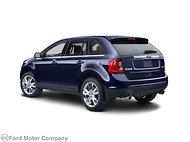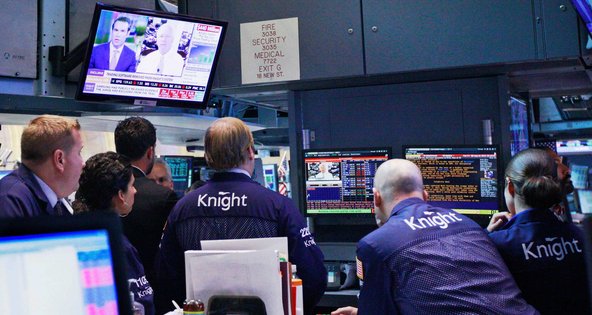Ronald H. Coase, whose insights about why companies work and when government regulation is unnecessary earned him a Nobel Memorial Prize in Economic Science in 1991, died on Monday in Chicago. He was 102.
His death was announced by the University of Chicago.
By his own description, Professor Coase (rhymes with doze) was an “accidental” economist who spent most of his career teaching at the University of Chicago Law School and not its economics department. Yet he is best known for two papers that are counted among the most influential in the modern history of the science.
In one, “The Nature of the Firm,” which was largely developed while he was still an undergraduate and published in 1937, Professor Coase revolutionized economists’ understanding of why people create companies and what determines their size and scope.
He introduced the concept of transaction costs — the costs each party incurs in the course of buying or selling things — and showed that companies made economic sense when they were able to reduce or eliminate those costs by performing some functions in-house rather than dealing in the marketplace.
The ideas laid out in the paper explain why, in the first half of the 20th century, companies tended to become more vertically integrated (for example, Ford Motor building its own steel mills and buying its own rubber plantations rather than relying on suppliers), and why, more recently, companies have tended to do the opposite, aggressively outsourcing even basic functions like paying their employees.
In the second of his groundbreaking papers, “The Problem of Social Cost,” published in 1960, Professor Coase challenged the idea that the only way to restrain people and companies from behaving in ways that harmed others was through government intervention. He argued that if there were no transaction costs, the affected parties could negotiate and settle conflicts privately to their mutual benefit, and that fostering such settlements might make more economic sense than pre-empting them with regulations.
The paper made the idea of property rights fundamental to understanding the role of regulation in the economy. It grew out of a study by Professor Coase on how the Federal Communications Commission licensed broadcasters.
The practice of issuing the licenses more or less permanently for small fees to whoever applied first and met legal requirements made little economic sense, he argued; better to treat them as property, auction them off and allow them to be freely transferred. Decades later, his ideas were used to raise billions of dollars for the Treasury when radio frequencies were assigned for cellular phone services.
Ronald Harry Coase was born on Dec. 29, 1910, in Willesden, England, the only child of two postal workers. Though he spent more than 50 years living and working in the United States, he retained his English accent and habits all his life.
His father was an amateur athlete of some renown, but Ronald’s interests were more academic, not least because of weakness in his legs that obliged him to wear iron braces for a time.
In his autobiographical essay written for the Nobel committee after being awarded the prize, he recalled being taken by his father at age 11 to a phrenologist to hear what could be discovered from the shape of his head. The phrenologist detected “considerable mental vigor,” Professor Coase wrote, and recommended that he work in banking or accounting and raise poultry as a hobby.
Because of his leg braces, Professor Coase wrote, he attended a special primary school and enrolled in secondary school a year late, missing the chance to pursue a concentration in history or Latin. Science was his third choice, but he found he had little patience for the mathematics involved, so he studied the only other subject available: commerce.
At the University of London, he was on his way to becoming an industrial lawyer when a seminar with Sir Arnold Plant, a well-known economist of the time, changed his focus again, this time for good. After graduating from the London School of Economics, he taught there and at other British universities, and married Marion Ruth Hartung in 1937. The couple immigrated to the United States in 1951, when he joined the faculty of the State University of New York at Buffalo. He left for the University of Virginia in 1958.
While teaching at Virginia, Professor Coase submitted his essay about the F.C.C. to The Journal of Law and Economics, a new periodical at the University of Chicago. The astonished faculty there wondered, according to one of their number, George J. Stigler, “how so fine an economist could make such an obvious mistake.” They invited Professor Coase to dine at the home of Aaron Director, the founder of the journal, and explain his views to a group that included Milton Friedman and several other Nobel laureates-to-be.
“In the course of two hours of argument, the vote went from 20 against and one for Coase, to 21 for Coase,” Professor Stigler later wrote. “What an exhilarating event! I lamented afterward that we had not had the clairvoyance to tape it.” Professor Coase was asked to expand on the ideas in that essay for the journal. The result was “The Problem of Social Cost.”
Professor Coase was soon invited to become editor of the journal, and to join the Chicago faculty, where he stayed the rest of his life, disdaining the equation-heavy approach of what he called “blackboard economics” in favor of insights grounded in real markets and human behavior.
By identifying transaction costs and explaining their effects, the Royal Swedish Academy of Sciences wrote in announcing his prize in 1991, “Coase may be said to have identified a new set of ‘elementary particles’ in the economic system.”
Professor Coase’s wife, Marion, died in 2012. No immediate family members survive.

This article has been revised to reflect the following correction:
Correction: September 3, 2013
An earlier version of this obituary misidentified the essay that earned Professor Coase an invitation to meet with the economics faculty of the University of Chicago. It was his essay about the Federal Communications Commission, not “The Problem of Social Cost.” (As a result of that meeting, Professor Coase was asked to write the essay that was subsequently published as “The Problem of Social Cost.”)
Article source: http://www.nytimes.com/2013/09/04/business/economy/ronald-h-coase-nobel-winning-economist-dies-at-102.html?partner=rss&emc=rss





